Samsung QN85D is the base model in the Neo QLED series for 2024, but it certainly does not come across as "budget". It is a television that combines modern technology with convenient smart features. During tests, the Tizen system worked smoothly, and integration with the SmartThings ecosystem made it easy to connect other devices in the home. If we use Apple devices, AirPlay works flawlessly, which is convenient, especially when viewing photos or videos from a phone. As for how it performs in daily use, it simply works very well. The television handles viewing even in a bright room—its brightness is sufficient so that windows do not need to be covered. Additionally, the stable central stand not only looks good but also adds assurance that the device stands firmly and will definitely fit on many smaller pieces of furniture. It is true that it lacks recording features, but the solar remote control, which operates decoders (e.g. Canal+), and the PiP function are practical additions that everyone who enjoys spending time with regular television will appreciate. When it comes to picture quality—because that is the most important aspect in a television—QN85D makes an excellent impression. The VA panel provides very good black levels—especially when watching the television head-on. Thanks to miniLED backlighting, the television better controls the lighting, and consequently, much more detail is visible in dark scenes. As for motion fluidity, with a 120 Hz refresh rate, the television performs excellently—both games and sports matches are enjoyable to watch. If we are playing games, the low input lag combined with the excellent motion smoothing and game bar will be a significant advantage—the gameplay will be a pleasure. Samsung QN85D is a versatile television that will perform well both in everyday television watching and during more demanding screenings or gaming on a console. Although it lacks some features, such as recording, its picture quality, motion fluidity, and smart capabilities definitely make up for these shortcomings. If we are looking for a modern yet affordable Mini LED model, QN85D would be an excellent choice.
- Matching (Score)
- Our verdict
- TV appearance
- Where to buy
- Contrast and black detail
- HDR effect quality
- Factory color reproduction
- Color reproduction after calibration
- Smoothness of tonal transitions
- Image scaling and smoothness of tonal transitions
- Blur and motion smoothness
- Console compatibility and gaming features
- Input lag
- Compatibility with PC
- Viewing angles
- Daytime performance
- Panel details
- TV features
- Apps
- Playing files from USB
- Sound
Samsung Neo QLED QN85D / QNX1D vs Haier Q80FUX
Direct comparison
Neo QLED / QN85D / QNX1D


Panel type: LCD VA
Resolution: 3840x2160
System: Tizen
Model year: 2024
Complete the survey to find out the result

Panel type: LCD VA
Resolution: 3840x2160
System: Google TV
Model year: 2025
Complete the survey to find out the result

Overall rating
7.4
5.8
Movies and series in UHD quality
6.7
5.9
Classic TV, YouTube
6.8
5.6
Sports broadcasts (TV and apps)
6.7
4.7
Gaming on console
8.9
6.7
TV as a computer monitor
7.6
6.0
Watching in bright light
7.3
4.8
Utility functions
7.4
5.6
Apps
8.7
9.6
Sound quality
7.0
5.5
Complete the survey to find out what fits your preferences
Advantages
Great contrast - Miniled backlighting
Very good for gamers - 120hz, 4xHDMI 2.1, low input lag
Tizen operating system with SmartThings and AirPlay support – wide integration and flexibility
Very high brightness 825 cd/m² – good performance in bright rooms
Pleasant sound with noticeable bass
Very good native contrast and decent black (thanks to the VA panel)
PFS / QLED filter - Wide colour gamut (approx. 95% DCI-P3)
Remarkably low input lag (below 10 ms at 120Hz and around 12 ms at 60Hz), making it an excellent choice for fast-paced games.
Support for 120Hz in lower resolution (Full HD) and the presence of VRR and ALLM
Support for Dolby Vision
Well-functioning file player from USB
Presence of an analogue headphone output (jack)
Disadvantages
No recording function
Limited multimedia format support, no DTS audio format
The image is quite heavily "blown out" in HDR
Google TV software is full of bugs, poor translations, and issues
Lack of any image enhancement features (noise reduction, gradient smoothing)
Average brightness
Flat, bass-less sound
High input lag in Dolby Vision mode for gaming
Odd and poorly ergonomic remote
Our verdict
The Haier Q80FUX television is one of the most schizophrenic propositions we've had in our editorial office for a long time. On one hand, we have a solid piece of equipment here: a VA panel ensuring deep blacks, as expected in this segment, and a QLED quantum filter that can indeed produce vibrant, eye-catching colours. This is the foundation upon which a really competitive mid-range receiver could have been built. Unfortunately, all this matrix potential is systematically thwarted by the software, which represents a true millstone around the neck of this model. The Achilles' heel of the Q80FUX is its total capitulation when faced with HDR10 materials. The electronics seem to completely misunderstand how to interpret the signal, resulting in the brightest parts of the image being continuously blown out, turning them into a flat, milky patch. If we add the Google TV system to this, which, although functional, is unstable, full of bugs, and annoying shortcomings, we see a product that feels raw and clearly shows the manufacturer's lack of experience. Just when we thought we had written this model off, we discovered its surprising niche. Once connected to a console, the Q80FUX undergoes a transformation. It turns out that this television offers an impressively low input lag, fully supports VRR, and can handle a 120Hz signal in Full HD resolution. In the gaming world, where responsiveness is everything, these parameters put it in a very good light. So, we are dealing with a device of very narrow specialization. This is not a universal living room television – it lacks stability and above all, any correctness when handling films. Rather, it is a budget-friendly, large-format monitor for gamers, who can consciously forgive it all the software flaws in exchange for those few key attributes needed for consoles/PC at a relatively affordable price.
TV appearance





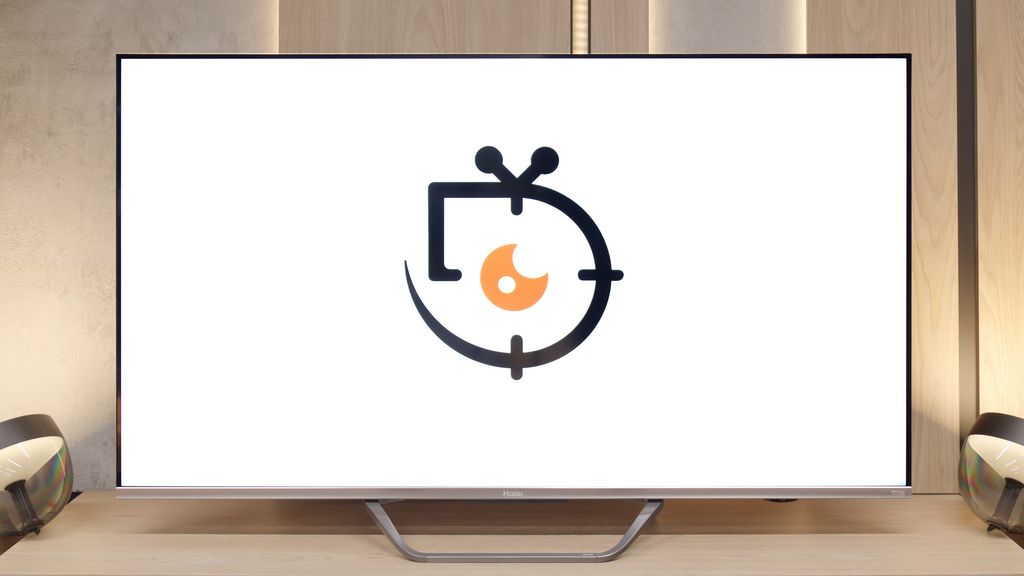
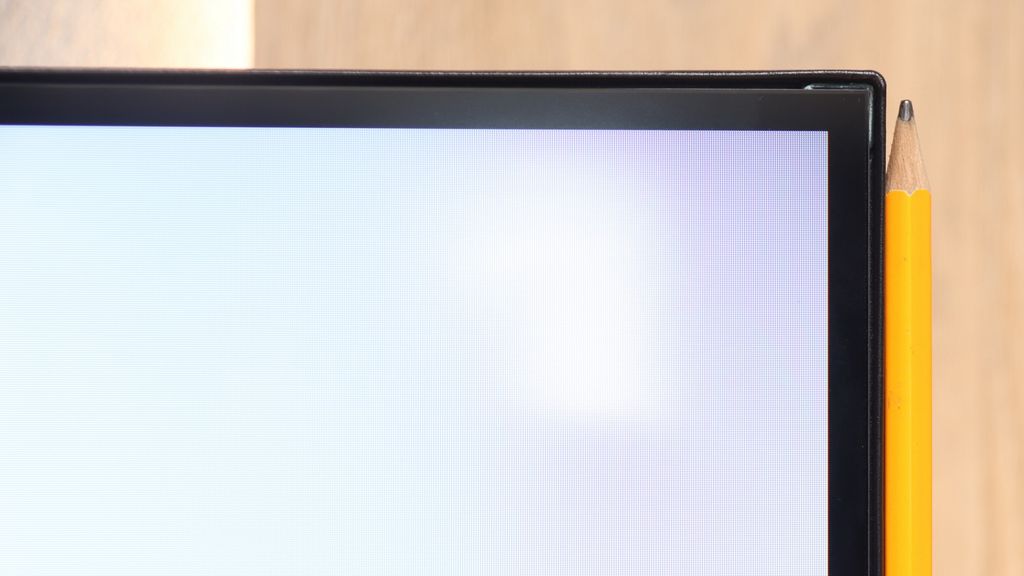
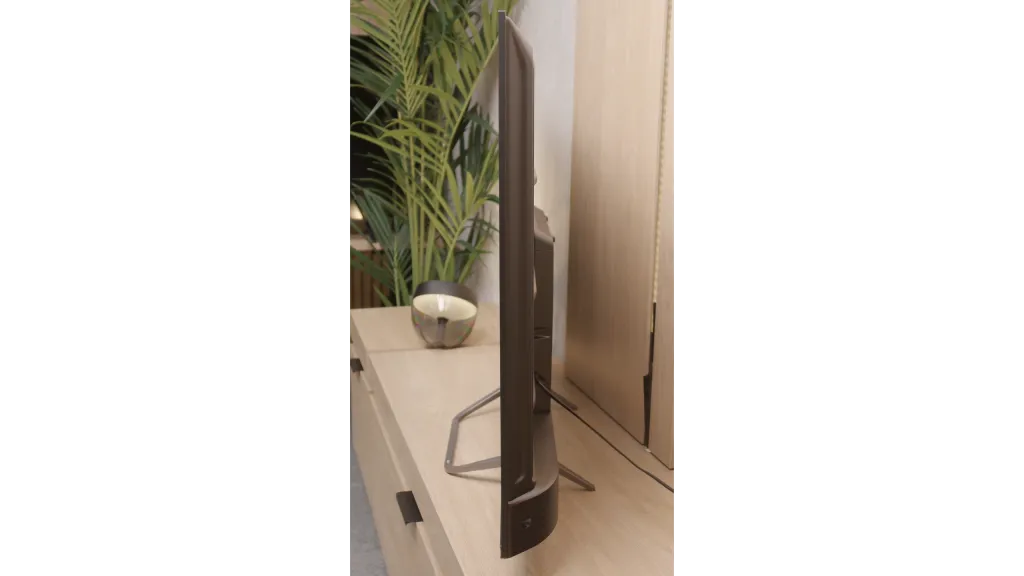
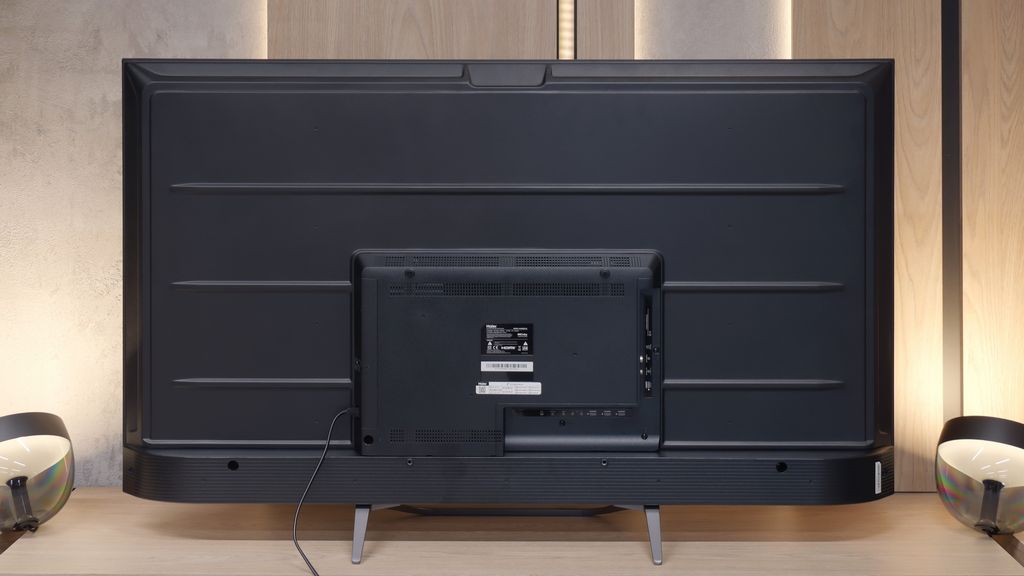
Contrast and black detail
7.6/10
6.3/10
Local dimming function: Yes, number of zones: 120 (12 x 10)
Local dimming function: No
Contrast:

Result
107,750:1

Result
27,100:1

Result
62,500:1

Result
8,750:1

Result
4,950:1

Result
5,200:1

Result
7,400:1

Result
7,550:1

Result
7,300:1

Result
6,450:1
Halo effect and black detail visibility:

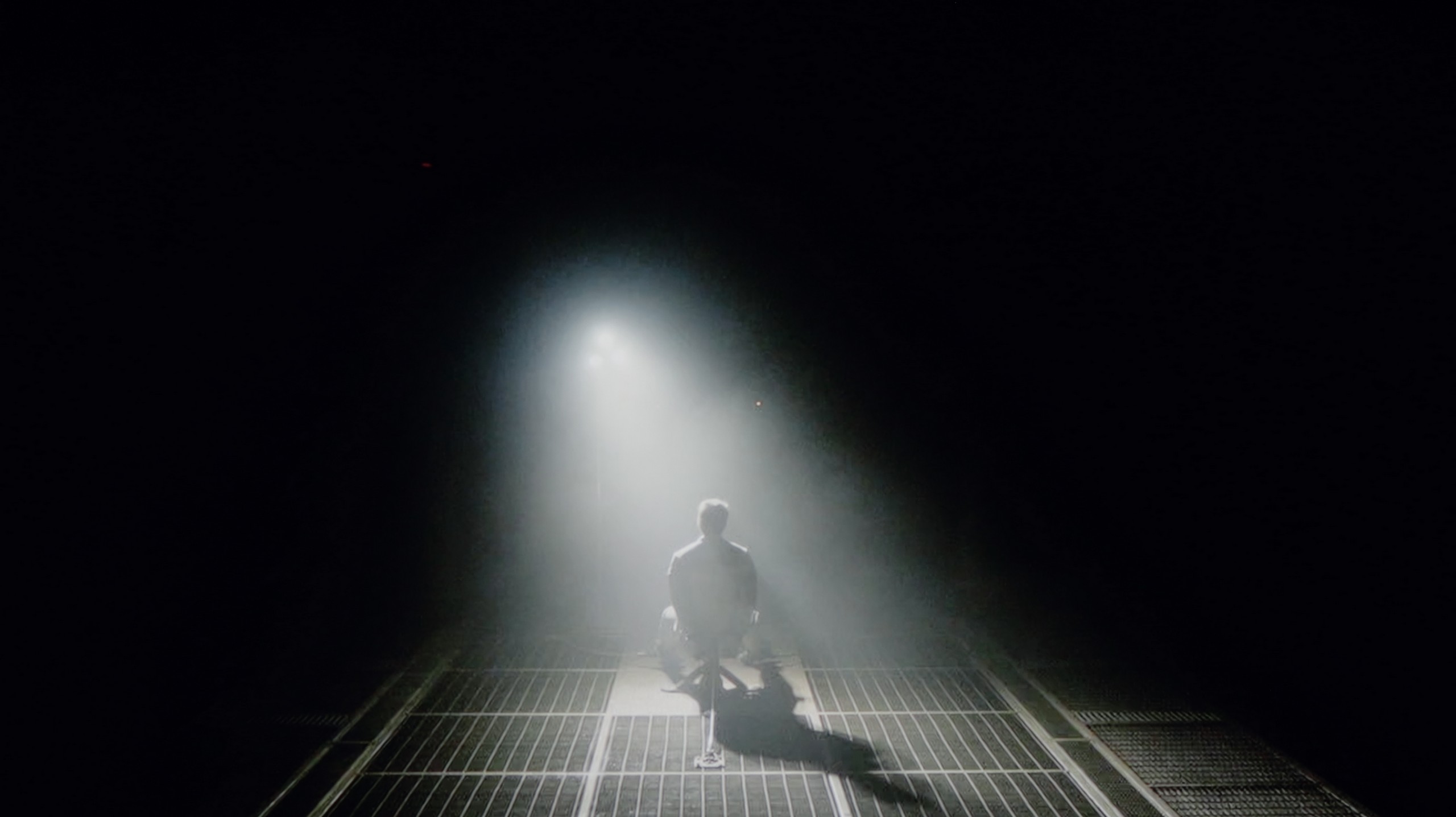
Samsung QN85D for 2024 is the first model from the NeoQLED series, featuring a VA panel that offers significantly better blacks than IPS/ADS technologies. The 55-inch version has 160 dimming zones, which may not seem impressive compared to competing models from China. In larger sizes, the number of zones increases, which naturally translates into better contrast. The contrast performance is good, but certain limitations are evident.
With smaller screen elements, the limited number of zones causes issues – the television either tries to maintain a high level of brightness, leading to a halo effect around objects, or dims too much, as observed in the test scene from the Pioneer disc. Additionally, in the same scene where the television showcased its highest capabilities (Oblivion), it also struggles significantly with light separation. You can see how the television fights to maintain the best black at the expense of detail in the whites. It's a trade-off. Both of these effects influence the perception of contrast, making the performance weaker in more challenging conditions. However, compared to televisions without local dimming technology, the results are very positive and can be surprising.
I must admit that approaching a receiver in this price range, one instinctively crosses their fingers, hoping that at least the black won’t be a grey patch. Meanwhile, the Haier Q80FUX, specifically the 55-inch specimen residing in our editorial office, can very positively surprise in this regard. Its secret lies in the use of a VA panel, which inherently has a tendency to generate high contrast. And these are not empty promises. During screenings, in most cinematic shots, the contrast consistently reported levels from 5000:1, often reaching the threshold of 8000:1. These are really strong results, considering the fact that this television does not possess any, even minimal, form of local dimming. Translating this into experiences from behind the couch: for its price point, the Q80FUX offers simply solid black. Of course, it is not that perfectly velvety depth that makes the screen disappear into darkness. When we conduct a screening in conditions of full isolation from light, we notice that in the darkest parts of the image, the black reveals its budget origins, subtly veering towards a bluish hue. However, this is a defect that is easy to mask – just a bit of light from a lamp in the corner of the room is enough for this nuance to become invisible, and the image to regain satisfying depth.
HDR effect quality
5.6/10
4.9/10
Luminance measurements in HDR:

Result
999 nit

Result
335 nit

Result
562 nit

Result
182 nit

Result
855 nit

Result
308 nit

Result
327 nit

Result
352 nit

Result
330 nit

Result
344 nit
Scene from the movie “Pan” (about 2800 nits)


Scene from the movie “Billy Lynn” (about 1100 nits)


Static HDR10


Dynamic: HDR10+
Dynamic: Dolby Vision


HDR luminance chart:
Haier Q80FUX
HDR luminance
Samsung Neo QLED QN85D / QNX1D
HDR luminance
Samsung QN85D leaves us with mixed feelings regarding HDR quality. It can shine in synthetic brightness tests, achieving up to 1000 nits – which makes scenes like those from the film 'The Meg' or the beginning of 'Life of Pi', where the screen is entirely bright, look truly impressive. However, in practice, the device has its limitations – especially when smaller bright elements appear on the screen. In such moments, brightness noticeably drops, and the HDR effect loses its impact. At brightness levels around 200-300 nits, the magic of HDR simply fades away, failing to deliver spectacular effects. However, it's not the case that the television completely disappoints – a DCI-P3 colour gamut coverage of 95% is quite decent, although it does not stand out against the best competitors. Colours are well-reproduced, but it's clear that HDR could make a bigger impression if brightness were better controlled.
Alright, let’s move on to the topic that stirs up so much discussion, namely the capabilities of the television in HDR mode. Let’s state it clearly right away: the Haier Q80FUX is certainly not a brightness demon. The panel of this receiver can generate about 350 nits at peak, which in today’s terms is the absolute minimum to even talk about the presence of High Dynamic Range (HDR). On the positive side, this power is at least stable – regardless of which test pattern or film scene we used, the measurements consistently oscillated in the range of 300-350 nits. These are therefore results that are at best sufficient, definitely far from the dazzling display of capabilities we are accustomed to with more expensive models. Fortunately, there is one aspect in which the Q80FUX compensates for these shortcomings and does so impressively. After all, we are talking about a QLED television (more precisely PFS LED), which means that thanks to the quantum dot filter applied to the panel, it can generate really juicy, vibrant colours. These are not empty promises – a DCI-P3 colour gamut coverage of nearly 95% is an impressive result and directly translates into colours that are very pleasant to the eye and saturated.
Factory color reproduction
6.3/10
4/10


Factory Mode
After calibration
Samsung QN85D TV has been tested in the best available mode – Filmmaker. Although one might expect that its name suggests a mode perfectly tailored for films, it unfortunately has several significant issues.
In terms of white balance for HD content, there is a clear dominance of red and blue, which causes the entire image to take on a pinkish hue – this is also confirmed by Colour Checker tests. This effect disrupts the naturalness of skin tones and many other elements, particularly noticeable in more challenging scenes. Initially, the white balance for 4K HDR content seems correct, but at the end of the graph, there is a significant spike in blue shades, which impacts the final image quality, making the colours appear unnatural.
The gamma brightness characteristics are also not ideal – although it generally stays close to the reference values, there is a slight drop below the 2.4 level, which can affect the perceived depth of shadows. The EOTF curve responsible for 4K content does not present itself any better. There is a noticeable boost relative to the reference curve, which leads to excessive brightening of the image in some areas, thereby losing the cinematic quality that the Filmmaker mode should provide. Although it might initially seem that the effect is cinematic, unfortunately, the number of errors in colour and brightness reproduction is too significant to call it flawless.
Factory settings for movie mode are rarely perfect, but in the case of the Q80FUX, we were confronted with a noticeable imbalance. In SDR content, the image was decidedly too warm, a result of excessive red in the white balance, giving the whole a slightly sepia tone. Ironically, in HDR materials, the television fell into the opposite extreme – an excess of blue caused an unnatural, cold effect in perception. However, it was not the capricious white balance that was the biggest problem with this television. The real culprit, responsible for the aforementioned issues, was hiding deeper. It turned out that the Q80FUX has completely miscalibrated gamma values and, crucial for HDR, a poorly executed EOTF curve. It was these erroneous factory settings that caused persistent clipping of the brightest parts of the image, overlaying them with that characteristic milky filter. Thus, we found the source of the problem. This state of affairs led to general, significant colour errors, which were easy to catch even for an untrained eye. Like every television we tested, we decided to calibrate this model as well, and the results of these adjustments can be found in the next paragraph.
Color reproduction after calibration
7.9/10
6.1/10

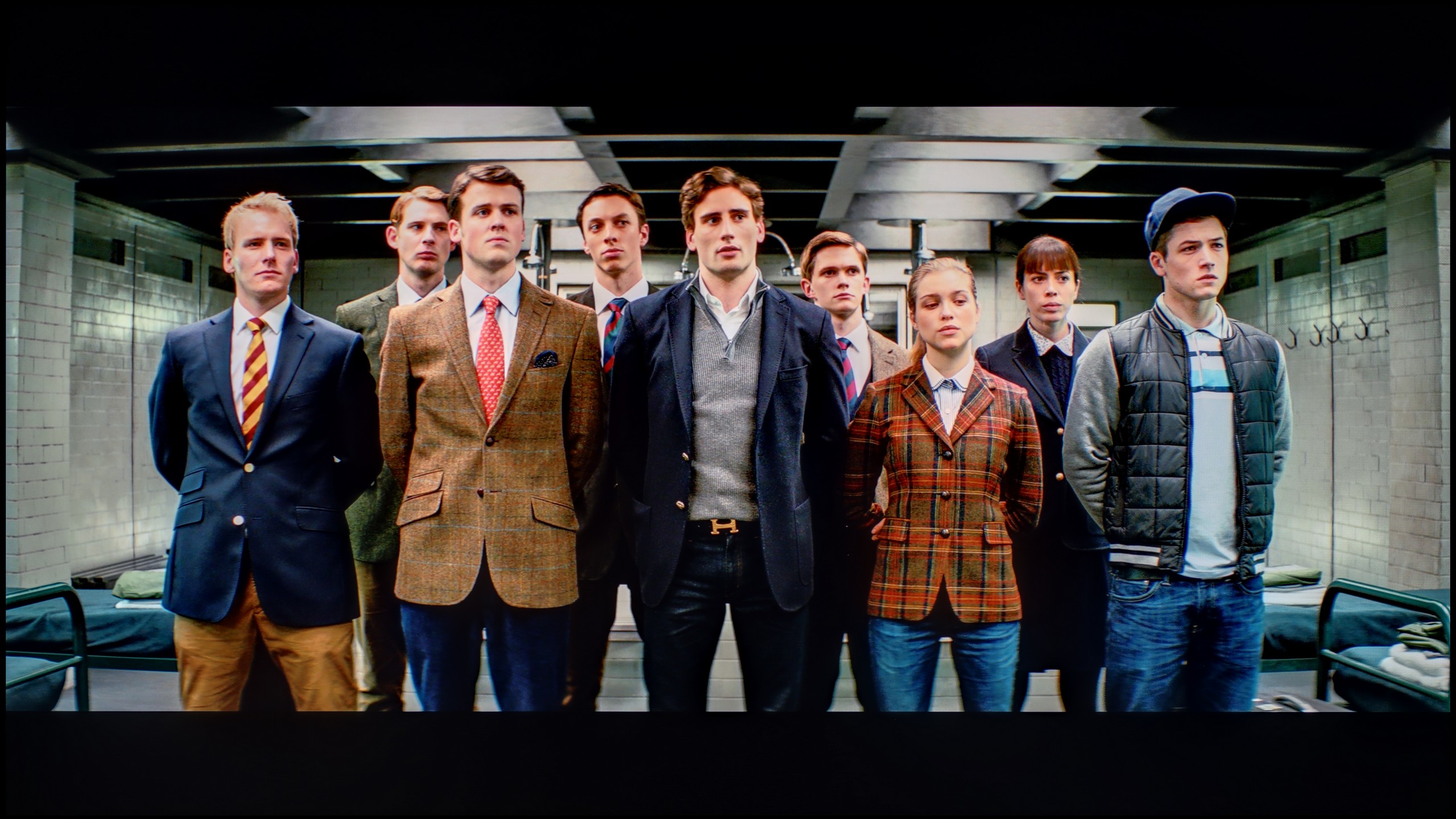


After professional calibration of the Filmmaker mode on the Samsung QN85D television, a significant improvement is noticeable, especially for HD/SDR content. The white balance has been completely stripped of serious errors, and the brightness characteristics for this type of content have been significantly adjusted, allowing for a more natural and realistic image. Television, YouTube movies, and other HD materials now look much better, with appropriately balanced colours and without the excessive hues that previously spoiled the viewing experience.
However, the biggest issues concern 4K HDR content. Despite the calibration, it's difficult to speak of a serious improvement in white balance – the differences are cosmetic rather than crucial. Brightness, which is governed by the EOTF curve, appears to be set in line with the reference level in synthetic tests at first glance, but has its limitations during actual usage in films. When we analyse the EOTF curve in real film scenes, it becomes apparent how the television struggles to maintain brightness consistency. The effect is that mixed scenes still have lifted darkest elements, leading to exaggerated contrasts, while completely dark scenes remain too dark, negatively affecting the visibility of details.
The results of our calibration procedures must, regrettably, be acknowledged as twofold. Generally speaking, the picture is undeniably better than before the corrections; however, the biggest winner of this process turned out to be SDR content. It is precisely there, after correcting the gamma and white balance graphs, that we achieved results that can confidently be called very good. After adjustment, the Q80FUX truly shines in standard dynamics, showing only slight errors in the most difficult skin tone reproductions. Unfortunately, the weakest link remains HDR content. Here lies the paradox: despite having calibrated the white balance to nearly perfection, the overall colour errors still remain at quite a high level. The reason is that the television continues to interpret static HDR10 metadata "in its own way," stubbornly enforcing that unfortunate image burn-out effect, which inevitably leads to significant distortions. Although we have successfully eliminated the factory excess of blue, it is precisely due to this interference of electronics that the screen still tends to stray into somewhat overly cold tones. That is just how this television is.
Smoothness of tonal transitions
7.6/10
7.5/10












When it comes to the fluidity of tonal transitions on the Samsung QN85D television, it is generally very good. The tonal transitions are smooth, and no significant artifacts are visible. However, more demanding users may notice some issues in certain scenes. For example, when blending darker shades, as in the scene with the red sea, slight imperfections can be observed. Similarly, with lighter colours – the scene from the film 'The Martian' shows minor gradation issues, leading to subtle yet noticeable transitions between hues. Despite these small shortcomings, most users should be satisfied. The performance is at a high level and, in most cases, delivers smooth, natural transitions between colours.
Analysing the ability of the television to handle subtle tonal transitions, known as "banding", leads us to interesting conclusions. The Haier Q80FUX seamlessly blends neighbouring colours in most scenes, creating a smooth, cohesive image. However, this process is not perfect. During testing, we noted minor issues and imperfections in every test scene we used. These may not be errors that aggressively stand out and ruin the viewing experience, yet their presence is worth noting. Interestingly, this receiver shows no particular weaknesses or strengths in this regard – it handles this challenge in exactly the same way, whether displaying delicate gradients of a bright sky or dark transitions in the shadows.
Image scaling and smoothness of tonal transitions
7/10
4/10
Smooth transition function

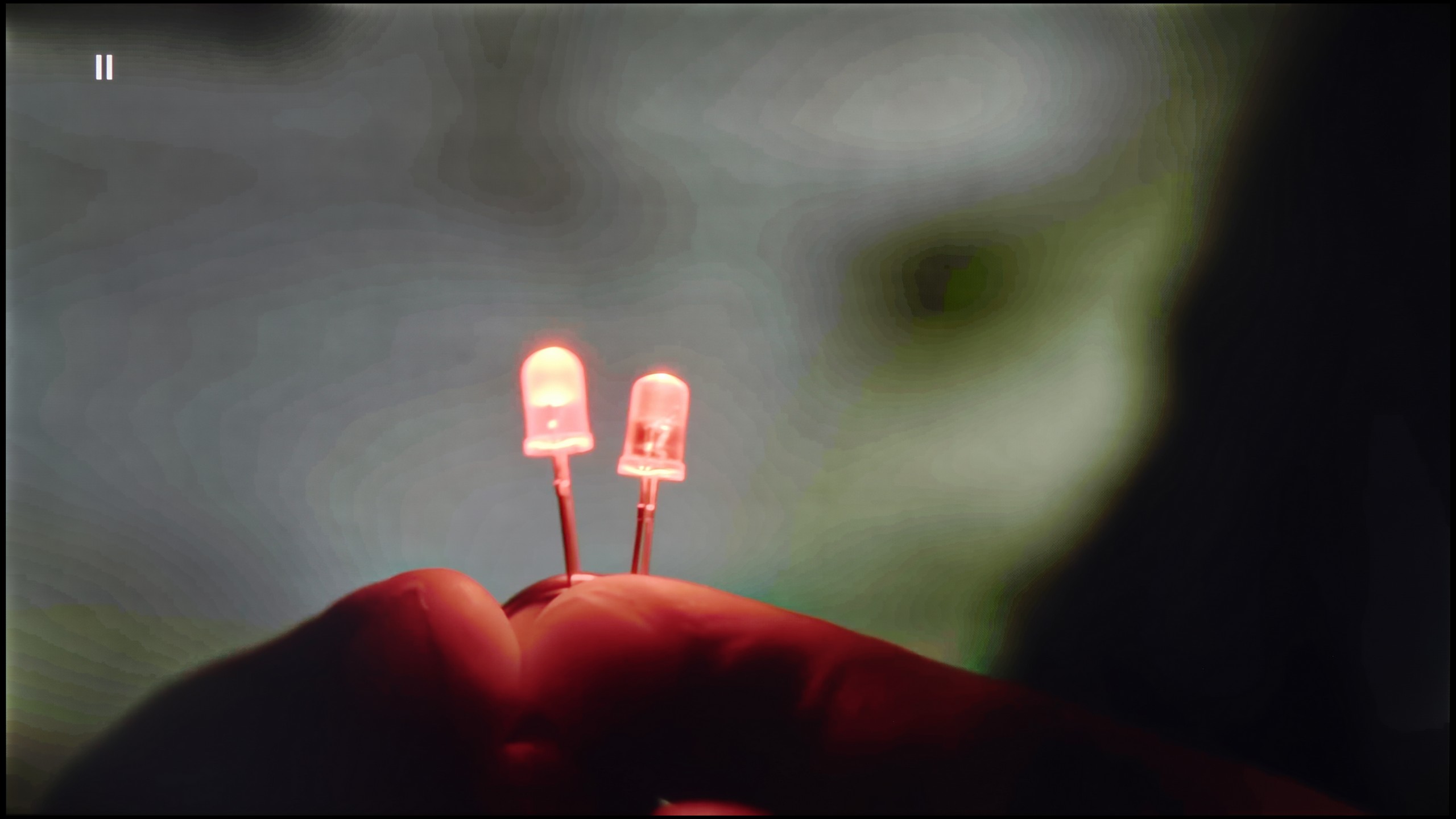
Image without overscan on the SD signal


When checking the smoothness of tonal transitions in low-resolution materials on the Samsung QN85D television, it is worth noting the noise reduction feature, which significantly improves problematic tonal transitions. On the other hand, this feature also has its downsides – it removes film grain, which is an important element of many productions, giving them authenticity, and it can also soften the image. This may appeal to those who prefer a more smoothed image; however, for lovers of the authentic look of films, using this feature should be considered carefully.
As for image scaling, the television performs very well. The model's figure is presented correctly, without noticeable distortions, and the branches in the background do not have excessive artificial sharpness, which is often a problem when scaling lower resolution materials. You can see the high capabilities of the image processor, which can effectively process lower quality materials, ensuring good final quality.
If there is one area where Haier clearly shows it still has a long way to go compared to the market leaders, it is digital image processing. The upscaling, well... is just alright. And that’s really about all that can be said about it. It does what is expected of it: it ensures that lower resolution signals do not scare us with harsh pixelation on the screen and do not look like a forcibly enlarged postage stamp. However, it is far from the finesse and “intelligent” sharpening that more experienced players in this market have developed over the years. The biggest shortcoming of the Q80FUX software is the almost complete lack of any additional "cleaning" and smoothing functions for the image. The receiver does not offer any noise reduction or gradient improvement mechanisms. This means that with older or heavily compressed materials, we simply have to come to terms with the fact that any imperfections in tonal transitions or blending of colours, which we mentioned earlier, will continually accompany us during the viewing.
Blur and motion smoothness
7.5/10
4.5/10

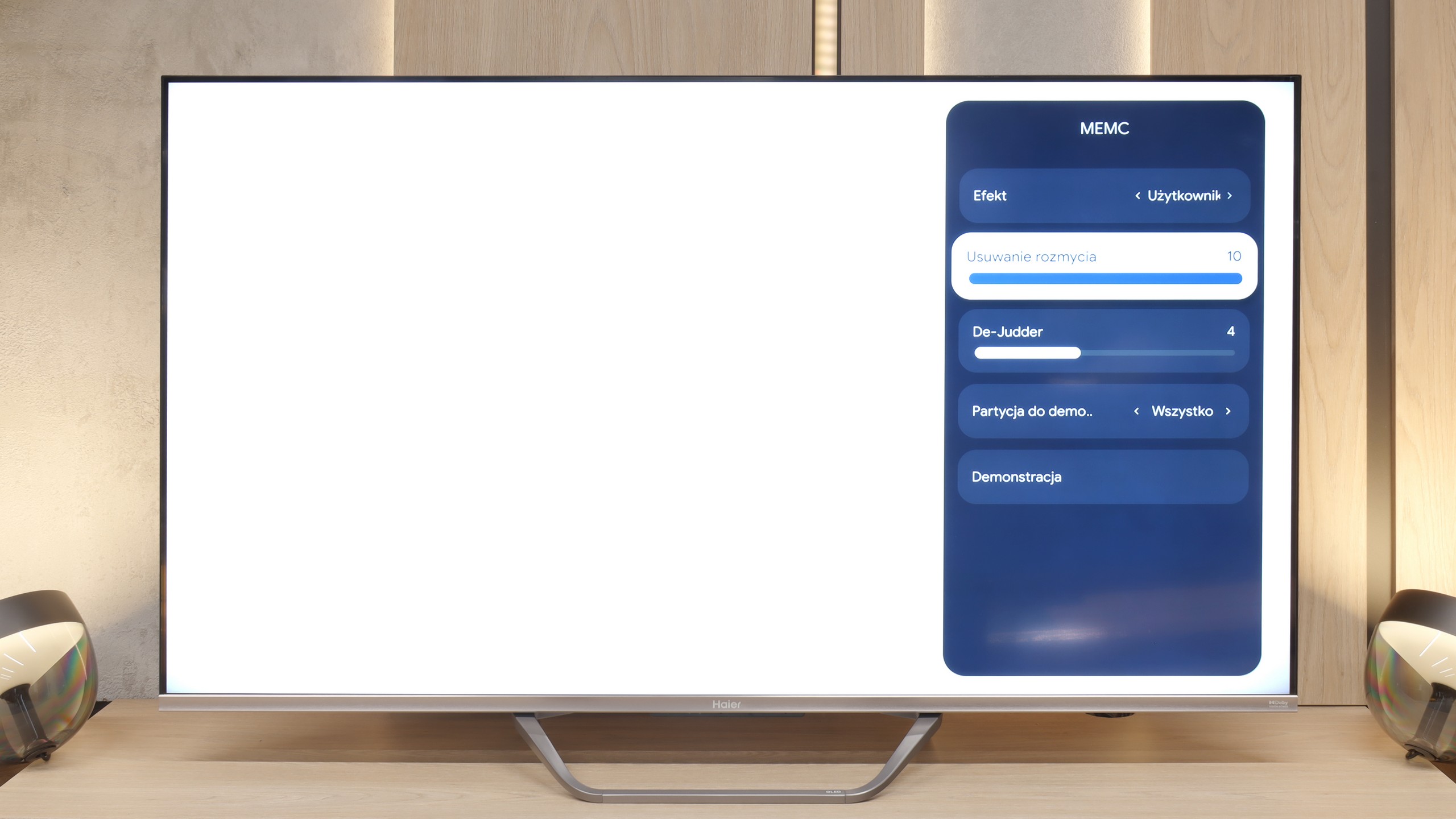
Blur (native resolution, maximum refresh rate):



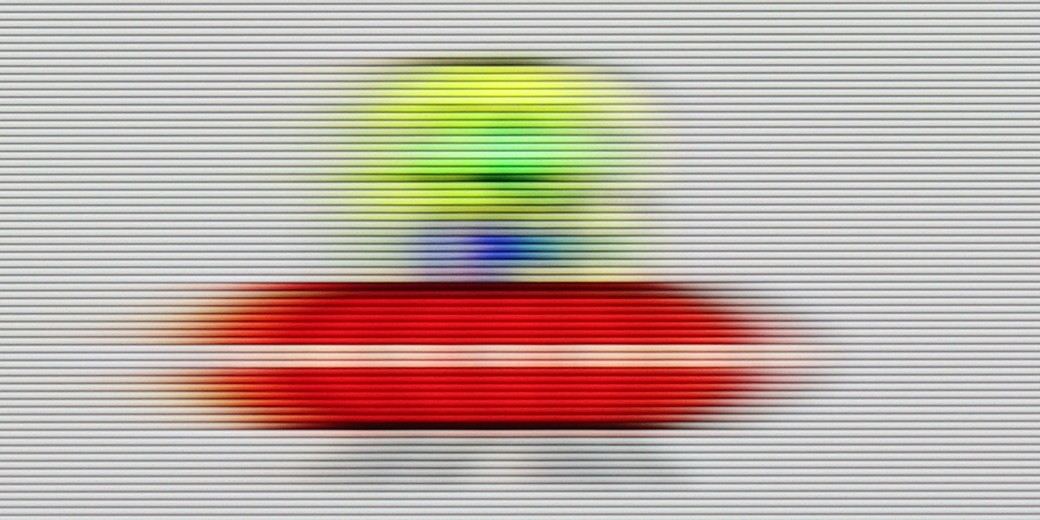
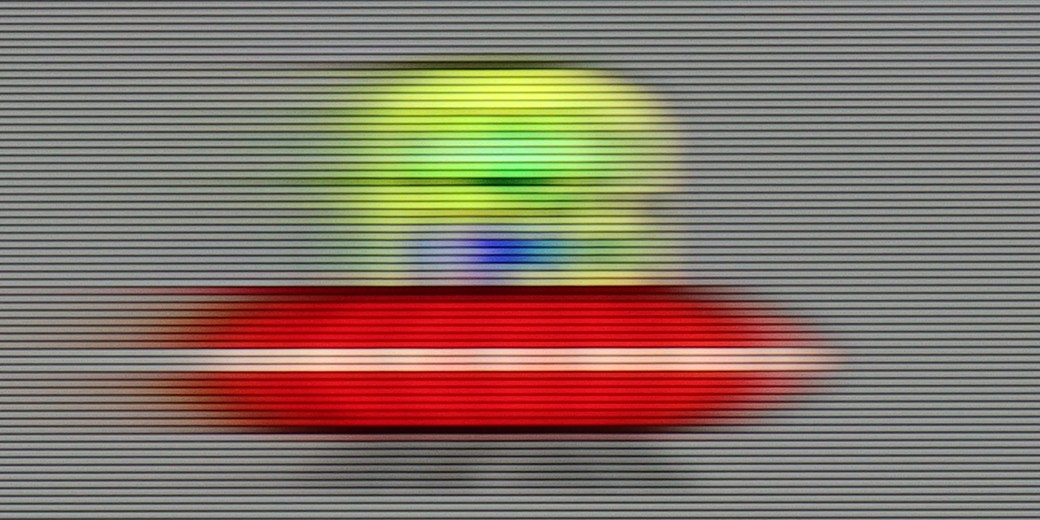
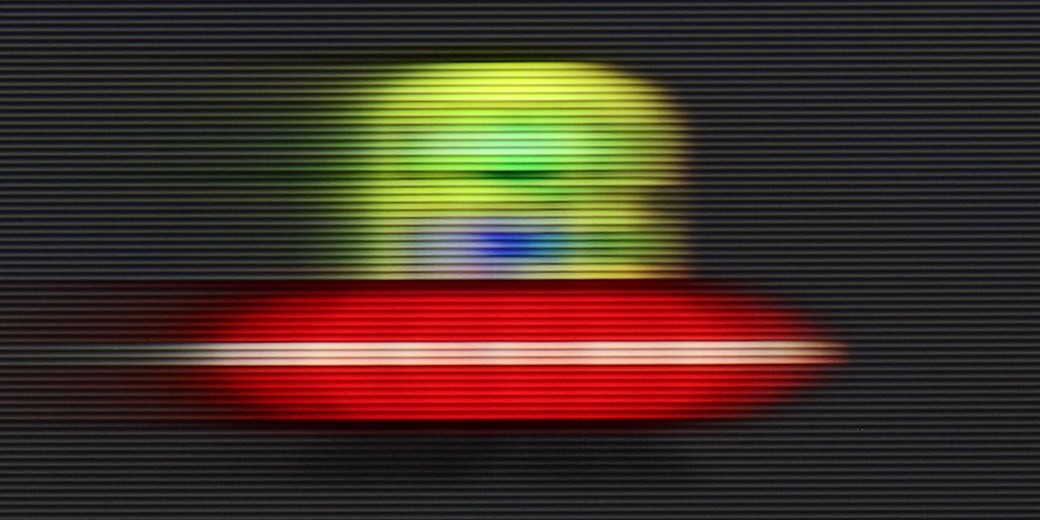
Samsung QN85D TV is equipped with a 120 Hz refresh rate panel, which should satisfy both gamers and sports fans by providing a smooth and dynamic picture. There are options to enhance fluidity, such as the motion blur and judder reduction feature, which allows for precise adjustment of motion smoothness on a 10-point scale. Motion blur reduction increases the sharpness of fast-moving objects, making action scenes clearer, while judder reduction smooths movement, eliminating the "stuttering" effect. Smearing is generally well controlled, although there are occasional minor shortcomings that may be visible in more demanding scenes, particularly when an object moves against a dark background. Additionally, the TV offers a BFI (Black Frame Insertion) feature at 60 Hz, which can significantly improve the experience of motion fluidity, although at the cost of image flicker, which may be bothersome to some users.
The issue of motion fluidity and blurring is largely predetermined by the use of a 60-hertz panel, which naturally makes it difficult to recommend this receiver to enthusiasts of very dynamic content. Fortunately, in the Q80FUX, we find a few options (although, as we shall see shortly, in reality only one) that are supposed to improve the experience with older film productions. There is a "De-Judder" slider available, which actually controls the smoothness of the image and allows us to adjust it to our preferences: from raw, cinematic frame rates to a more theatrical, smoothed presentation. However, a true surprise awaits us just beside it in the menu. There is also a second slider, supposedly dedicated to removing blur – a feature we typically encounter in 120Hz panels to combat motion blur in sports. However, as we expected, recalling memories from the tests of the K85F model, this slider here is merely a façade. Its adjustment does absolutely nothing to the image and it simply appears to be an oversight by the product engineers who left a non-functional option in the software for this type of panel.
Console compatibility and gaming features
9.5/10
5.6/10
- ALLM
- VRR
- VRR range48 - 120Hz48 - 120Hz
- Dolby Vision Game Mode
Yes, high input lag
- Correct implementation of HGIG
- 1080p@120Hz
- 1440p@120Hz
- 4K@120Hz
- Game bar

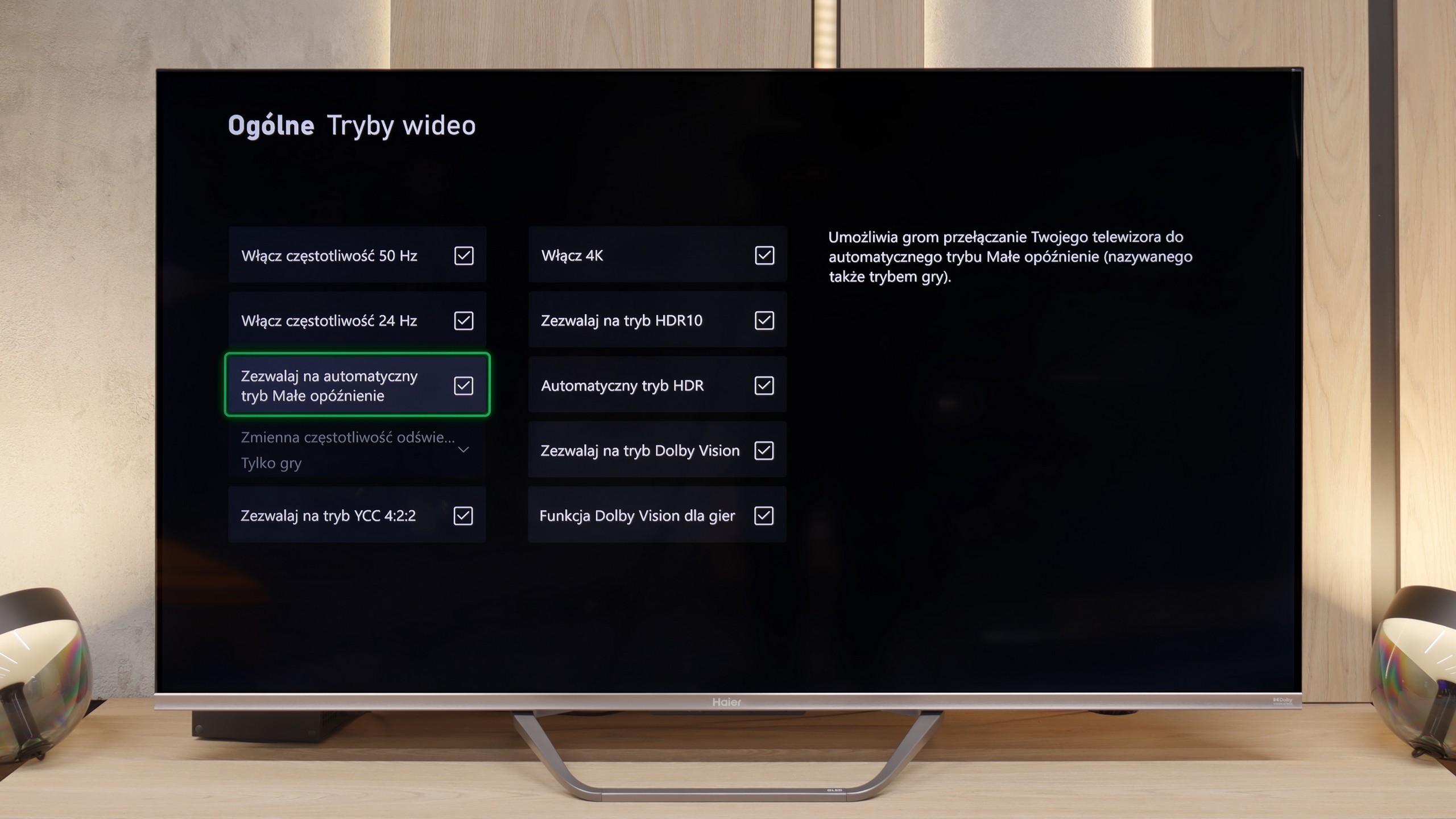

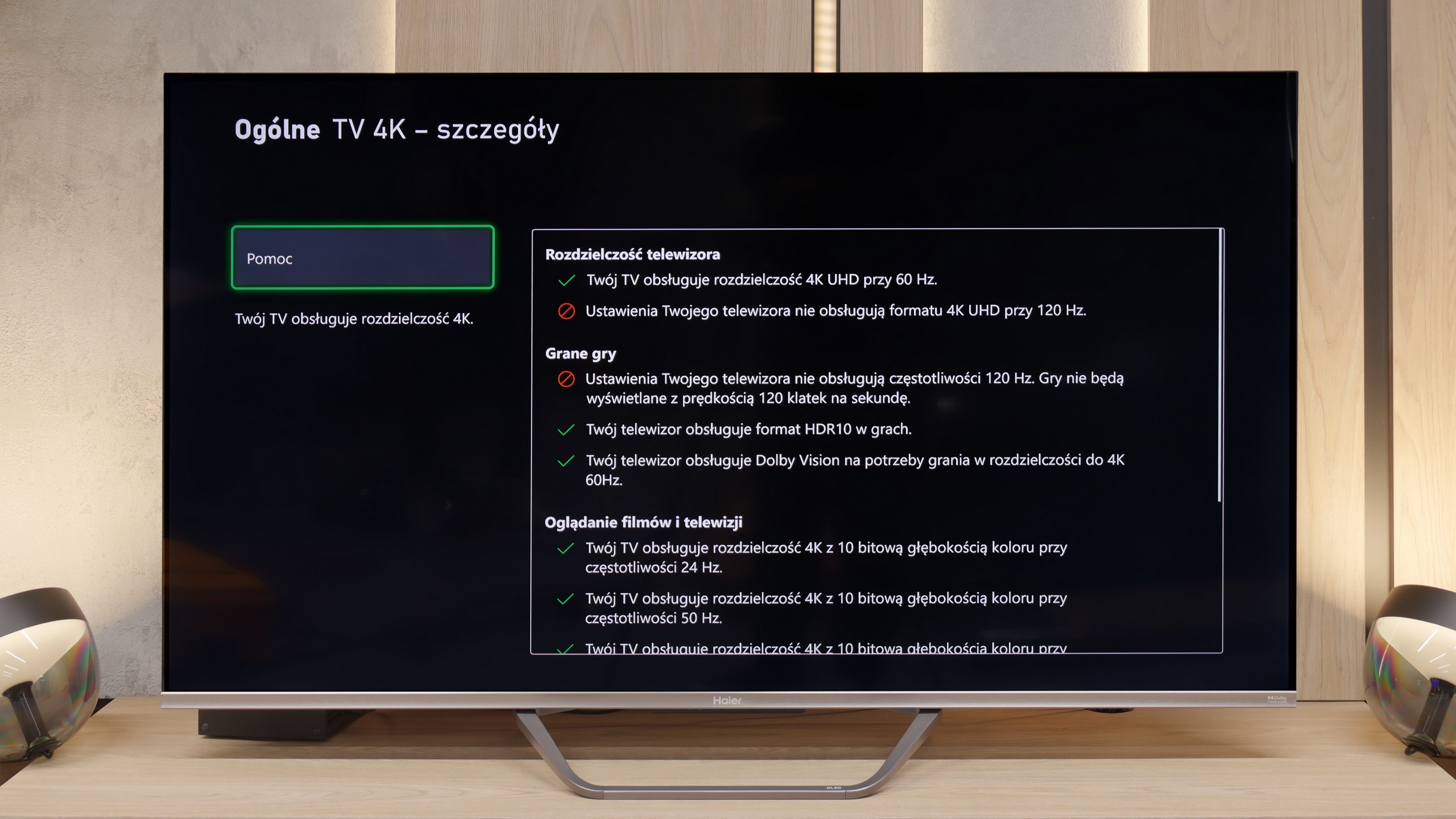




The Samsung QN85D television is an excellent choice for gamers, offering a wide range of features that enhance the gaming experience and make it even more exciting. With a refresh rate of 120 Hz, the image is incredibly smooth, which is crucial during dynamic scenes in action games. The television also features low input lag, ensuring that reactions to the player's commands are nearly instantaneous, translating to better control over the character and events on the screen.
In addition, the QN85D Samsung supports VRR (Variable Refresh Rate) and ALLM (Auto Low Latency Mode) technologies, which optimise image fluidity and reduce delays by automatically adjusting the television to meet the needs of gamers. Furthermore, the Xbox app allows access to cloud gaming without the need for a console, which is a significant advantage for those who want to enjoy their favourite titles without additional hardware – a solution that sets Samsung televisions apart.
The Auto Motion Plus Game feature is another element worth highlighting. This motion smoother creates the impression of a higher frame rate – as a result, games running at 30 fps appear smoother, resembling gameplay at 45 fps, while games at 60 Hz come close to 90 Hz. Most importantly, this feature does not introduce significant lag, ensuring that the gaming experience remains undisturbed. This allows players to enjoy a smoother image without compromising on responsiveness.
Stepping into the realm of gaming, the Haier Q80FUX proves to be quite a decent companion for the "casual gamer". Onboard, we find highly desired features such as VRR (Variable Refresh Rate) and ALLM (Auto Low Latency Mode). However, the biggest surprise is something else altogether. Although we are not dealing with a 4K@120Hz panel here, the television is capable of accepting and displaying a 120Hz signal at a lower resolution (Full HD). This is a very useful feature that allows for a conscious switch of the console to a lower resolution mode in exchange for significantly higher smoothness, which is a compromise entirely acceptable in the gaming world.
We won’t particularly complain about the lack of extras like the "Game Bar", as it's merely a nice addition. The most concerning issues arise when we delve into the world of HDR in gaming. Due to the television constantly adapting the signal "in its own way", setting the brightness on the console according to the HGIG standard is nearly impossible to achieve as per instructions. Worse still, in the Dolby Vision mode for gaming, the input lag increases to around 50 ms, which is a value high enough to render this mode practically unusable. However, in general, we would not recommend gaming on this television in HDR mode, so these are not such grave shortcomings. What is most pleasing is the presence of 120Hz in Full HD, which makes the Q80FUX a rather nice television for the occasional gamer.
Input lag
9.9/10
9.4/10
SDR
HDR
Dolby Vision
Samsung QN85D impresses when it comes to input lag value. The television achieves remarkable results – below 15 ms for 60 Hz content and around 10 ms for 120 Hz content. As a result, gamers can enjoy instantaneous reactions to their actions, especially in dynamic games where every millisecond counts. Such low input lag makes gameplay more responsive and natural, enhancing the overall experience while gaming.
If there is one category in which the Haier Q80FUX absolutely shines and shows its claws, it is input lag. In this regard, the television presents results that are nothing short of remarkable. In 120Hz mode (achieved, let us remind you, at a lower resolution), input lag drops below 10 ms, which is an excellent value, worthy of high-end gaming monitors. Not much worse, and still at a very good level, is the classic 60Hz mode – here the measurements consistently indicated around 12-14 ms. These are results that significantly more expensive, dedicated gaming designs would not be ashamed of. The only serious stumble here is the Dolby Vision mode. As we have established before, its activation raises the lag to an unacceptable level, so we definitely advise against using it during any interactive gameplay.
Compatibility with PC
7.6/10
6/10


The Samsung QN85D can be a good option as a computer monitor. Thanks to the support for 4:4:4 chroma (available only in "Game" mode), the text on the screen is sharp and easy to read, which is crucial for those working with word documents or spreadsheets. A significant advantage of this model is also the exceptionally low input lag in "PC" mode – just 9 ms, which is really impressive and provides high smoothness and responsiveness, beneficial for both work and gaming. However, there are some drawbacks. When displaying fonts on a dark background, a problem arises – when we zoom in on the image, it can be seen that the horizontal lines are darker than the vertical ones. This is due to the fact that the sub-pixels in these areas do not fully illuminate, which may result from a manufacturer oversight in optimising the algorithm responsible for displaying thin lines. As a result, the quality of text on a dark background is not perfect. Despite this, the television remains a very good choice as a PC monitor, especially considering the low input lag and support for 4:4:4 chroma.
We also checked, of course, how the Q80FUX performs when connected to a computer. And here’s another pleasant surprise – it handles this really very well. The most important thing is that the fonts are very readable, so nothing blurs and you can work on it normally. Additionally, just like with consoles: we can set a lower resolution here in exchange for achieving a high refresh rate of 120Hz. Importantly, in this mode, G-Sync launched correctly and worked well. This only confirms that this television is truly a successful and efficient piece of equipment for gaming, even on a PC.
Viewing angles
2.9/10
3.3/10
The Samsung QN85D television, due to the applied VA panel, has rather poor viewing angles. When viewed from the side, the colours lose intensity, and the picture becomes noticeably less contrasty. This is a typical disadvantage of VA panels, which offer significantly worse picture quality when viewed from wider angles. However, straight on, the situation looks much better – the VA panel then provides deep blacks and better contrast, which is a big plus if the television is mainly viewed while sitting directly in front of the screen.
Anyone who plans screenings in a wide family group must be aware of the fundamental compromise that Haier has made by implementing a VA panel in this model. This technology has indeed given us deep blacks and high contrast, but its inherent characteristic is also a noticeable narrowing of viewing angles. It is enough to sit a bit further to the side of the sofa to immediately notice how the colours start to lose saturation and the image begins to fade. It’s simply a classic trade-off – we gain something (contrast) at the expense of something else (angles) – and the Q80FUX fits perfectly into this pattern.
Daytime performance
7.3/10
4.8/10

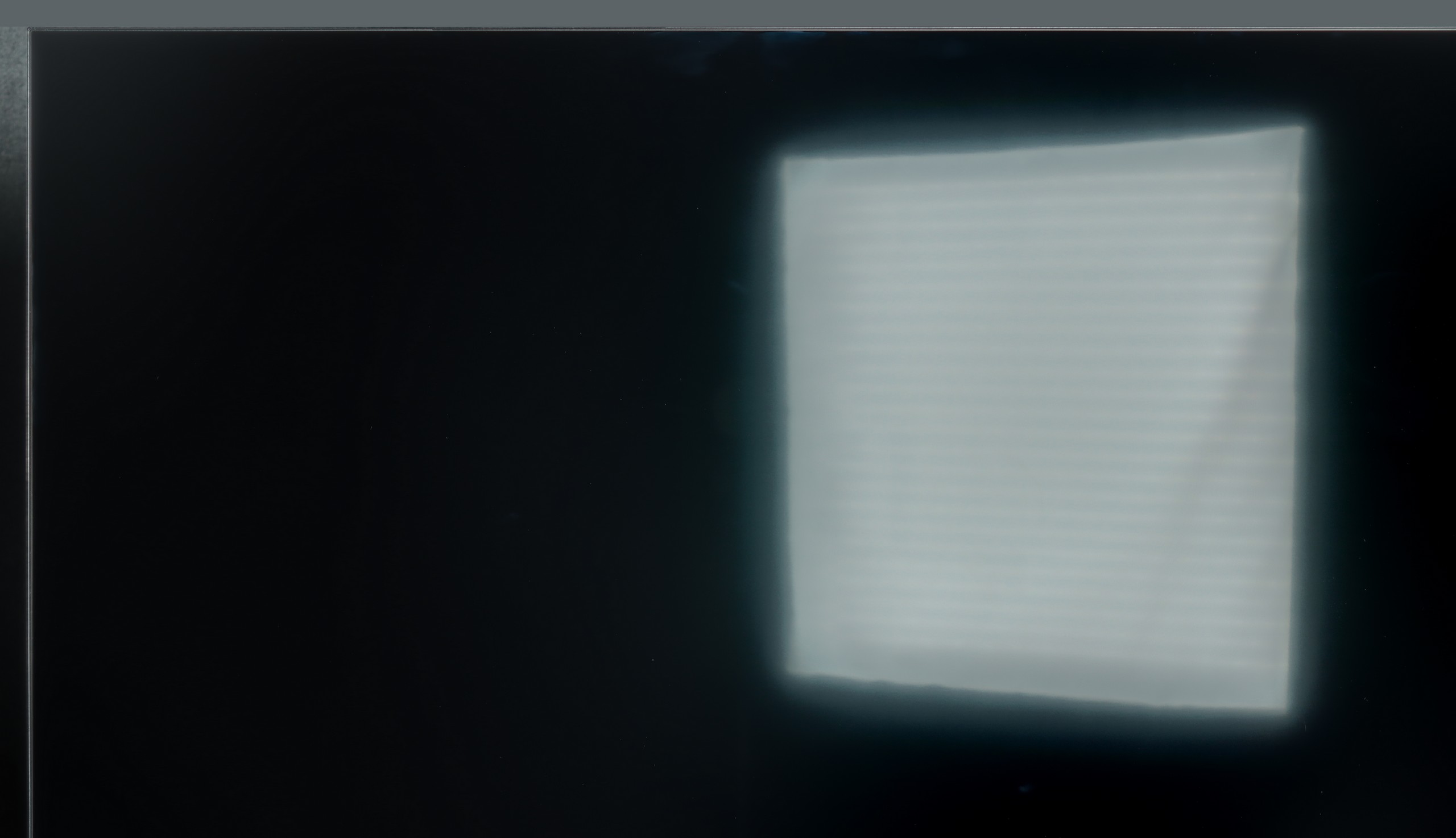

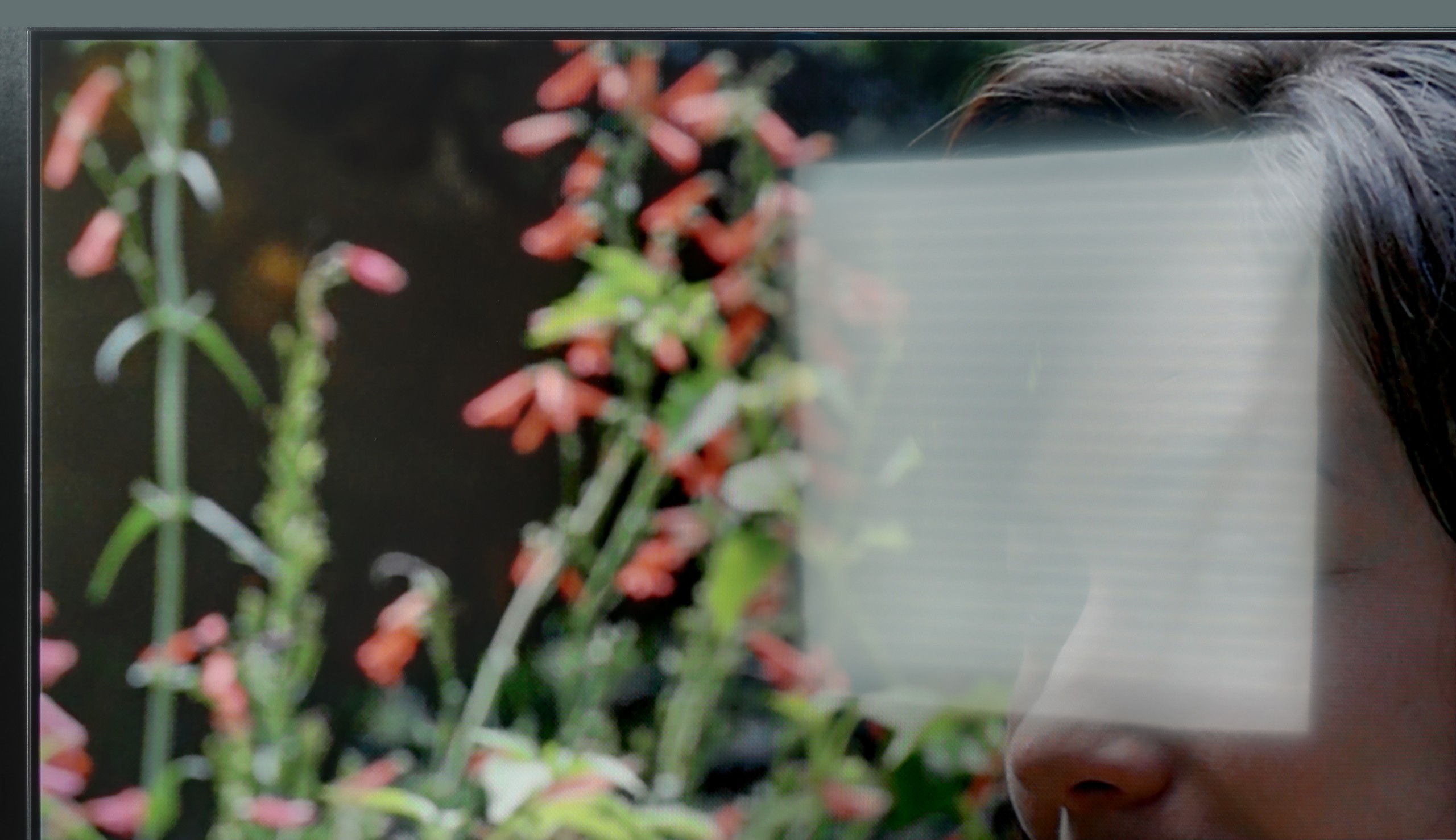
Panel brightness
Average luminance SDR
Haier Q80FUX: 317 cd/m2
Samsung Neo QLED QN85D / QNX1D: 825 cd/m2
Samsung QN85D TV performs very well in bright daylight conditions. Although the satin screen moderately reduces reflections, the brightness level of 825 cd/m² is truly impressive. Even in strong sunlight, the television handles very well, providing a clear and sharp image, and the largest external light sources pose no significant problem. This makes this model a good option for rooms with a lot of natural light.
The clash of the receiver with the daily challenges posed by a bright living room is quite decent in the case of the Q80FUX, although it is certainly difficult to speak of it as ideal. The panel itself is equipped with a coating that handles most reflections and glare from the surroundings quite effectively. Equally importantly, even in more challenging lighting conditions, the screen manages to retain pleasantly saturated colours. However, the weakness of this construction reveals itself where the brightness comes into play. The previously mentioned, rather moderate maximum brightness (around 350 nits) means that in confrontation with intense, natural light coming through the window, the screen often struggles to "break through". On a sunny day, the image may simply lack the appropriate impact.
Panel details
Subpixel Structure:

Panel uniformity and thermal imaging:


Samsung Neo QLED QN85D / QNX1D
Haier Q80FUX
TV features
7.4/10
5.6/10
- HDMI inputs0 x HDMI 2.0, 4 x HDMI 2.1 48Gbps4 x HDMI 2.0, 0 x HDMI 2.1
- Other inputsRCA (Chinch)
- OutputsToslink (Optical audio), eARC (HDMI), ARC (HDMI)Toslink (Optical audio), eARC (HDMI), ARC (HDMI), Mini-Jack (Headphones)
- Network InterfacesWi-Fi 2.4GHz, Wi-Fi 5GHz, Ethernet (LAN) 100MbpsWi-Fi 2.4GHz, Wi-Fi 5GHz, Ethernet (LAN) 100Mbps
- TV receptionDVB-T, DVB-T2, DVB-S, DVB-S2, DVB-CDVB-T, DVB-T2, DVB-S, DVB-S2, DVB-C
Classic features:
- Recording to USB (terrestrial TV)
- Recording programming
- Picture in Picture (PiP)
- RF remote control (no need to aim at the screen)
- Backlit remote control
- Teletext
- Audio only mode
- Bluetooth headphones support
- Simultaneous Bluetooth headphones & TV audio
Smart features:
- AirPlay
- Screen mirroring (Windows Miracast)
- Voice search
- Voice search in native language
- Ability to connect a keyboard and mouse


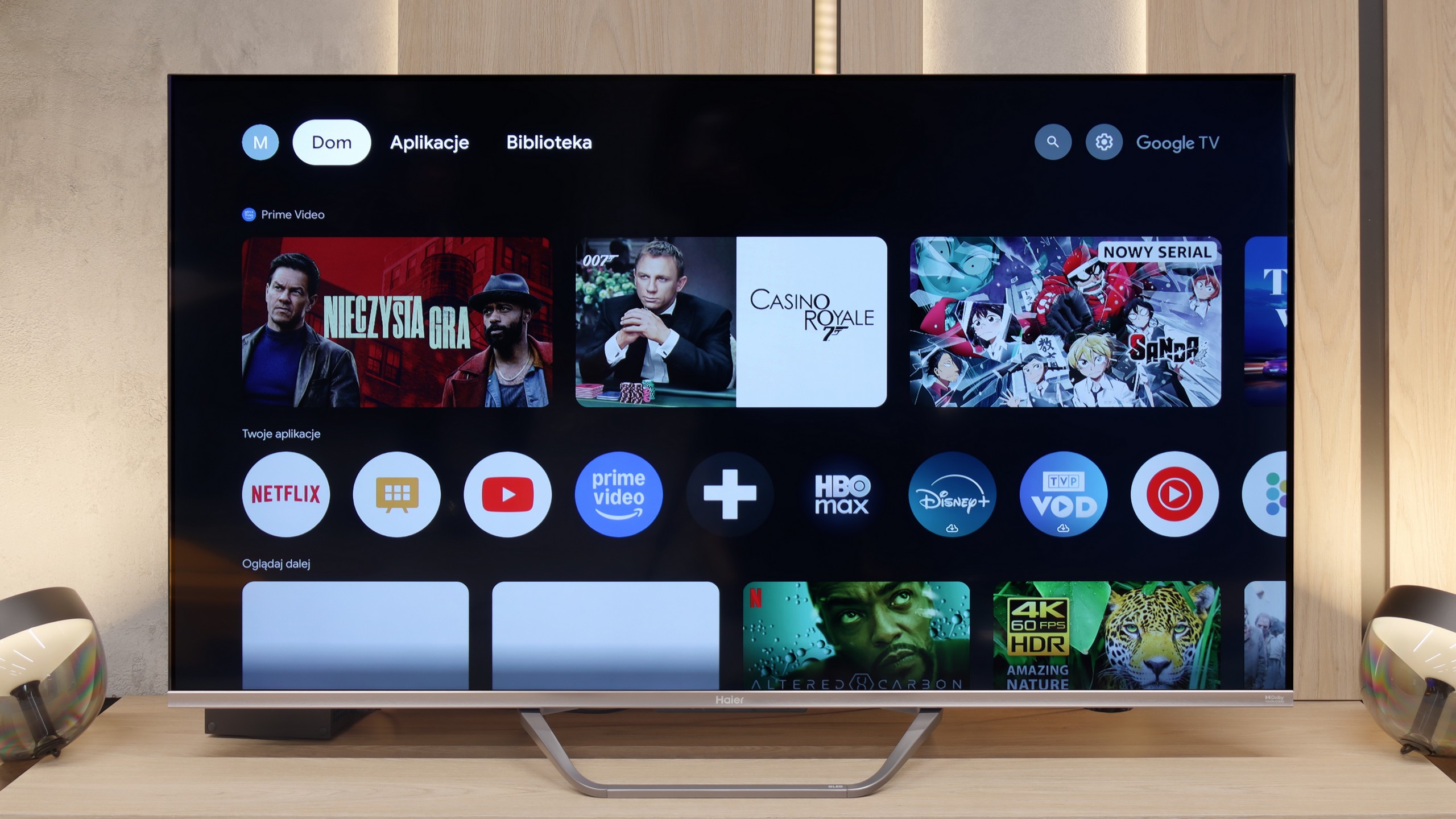
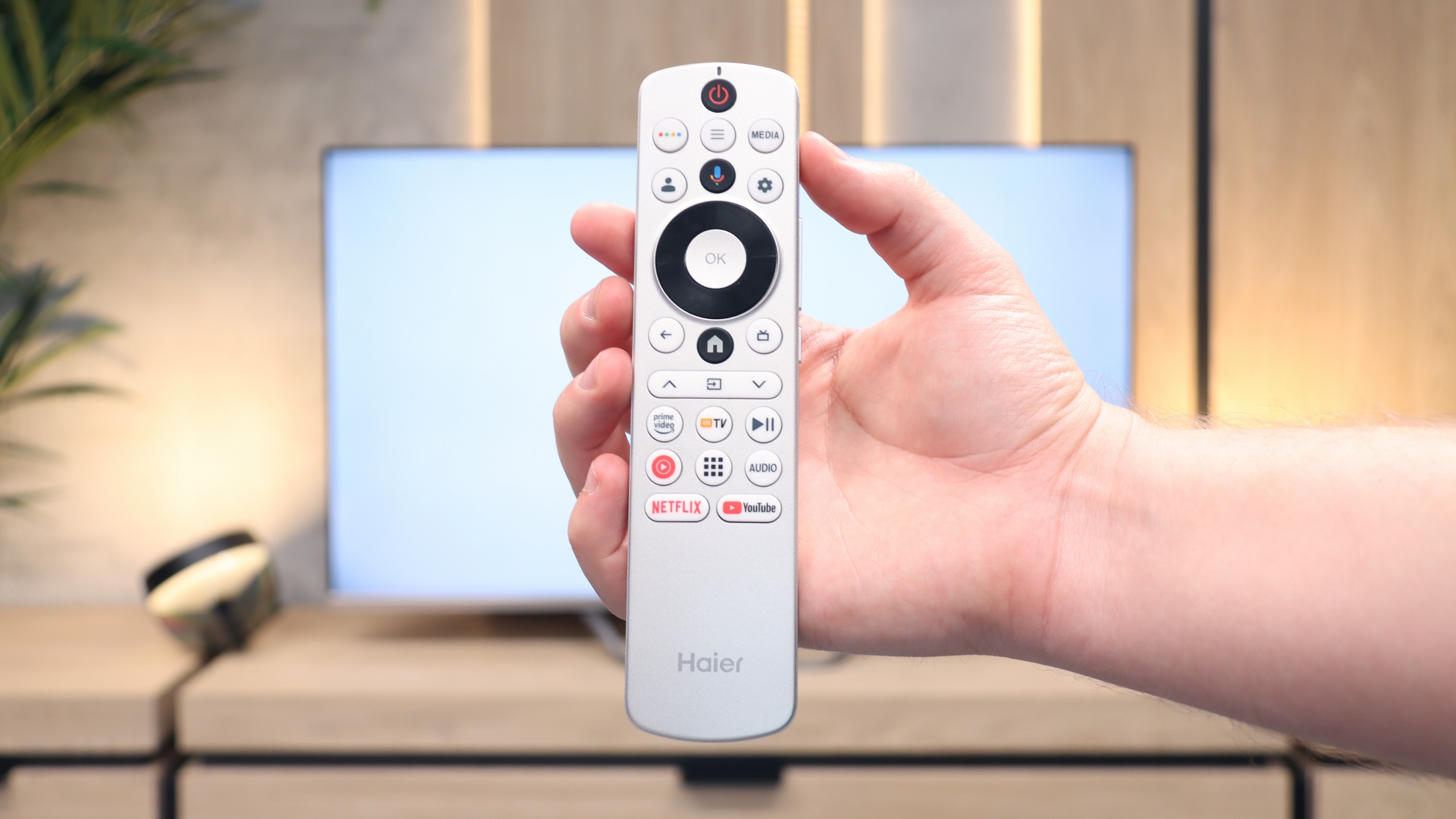

Samsung QN85D offers a wide range of smart features, thanks to the Tizen platform. Users have access to applications and functions such as SmartThings, allowing them to manage not only Samsung devices but also equipment from other brands, creating a complete smart home ecosystem. The television also supports AirPlay, enabling convenient content streaming from Apple devices directly to the screen, which enhances flexibility and comfort in everyday use.
The QN85D model also stands out in terms of unique features. The television includes Daily+, offering diverse content daily such as fitness exercises or workspace options. Additionally, the attractive appearance of the television, although not as slim as last year's models, still looks good. The central stand provides solid support and adds character to the device, giving the television a more elegant look.
When it comes to usability features, the television is equipped with a remote control that works with decoders such as Canal+, allowing easy control of most home equipment with one device. The television also includes a PiP (Picture-in-Picture) function, enabling users to watch two image sources simultaneously. Unfortunately, one of the drawbacks that can be noticed is the absence of a recording function, which may be a significant downside for some users.
SmartTV on Haier Q80FUX: GoogleTV
Let's start with the smart layer, which in the Q80FUX is managed by the Google TV system. This is theoretically a huge advantage, opening access to an incredible library of apps, facilitating screen mirroring from mobile devices, and offering convenient voice search. Unfortunately, just like in other models from this brand that we tested, the implementation of this platform leaves much to be desired. It's not even about drastic stuttering or delays in navigation, but rather a festival of minor errors, oversights, and terrible translations in the menu. Because of this, it's hard to regard "Google TV" in Haier's version as equal to what we find in receivers from Sony or TCL, even though the same proudly sounding name is displayed on the box.
Classic Features
Moving on to the classic, functional features of the television, the image of the device does not improve at all. The only commendable aspect is the presence of Bluetooth connectivity and an unusual but useful relic from the past in the form of an analogue headphone jack output. Aside from that, it's hard to find anything that would excite us. Due to the problematic software, the receiver (like its predecessors in our tests) was unable to find any terrestrial television channels, despite other televisions connected to the same installation having no issues whatsoever. The remote control itself is also strange – its design may appeal to some, but due to the lack of a numeric keypad and the absurd placement of some buttons on the side edge, it definitely cannot be called senior-friendly.
Playing files from USB
9.1/10
9.6/10
Supported photo formats:
Maximum photo resolution:

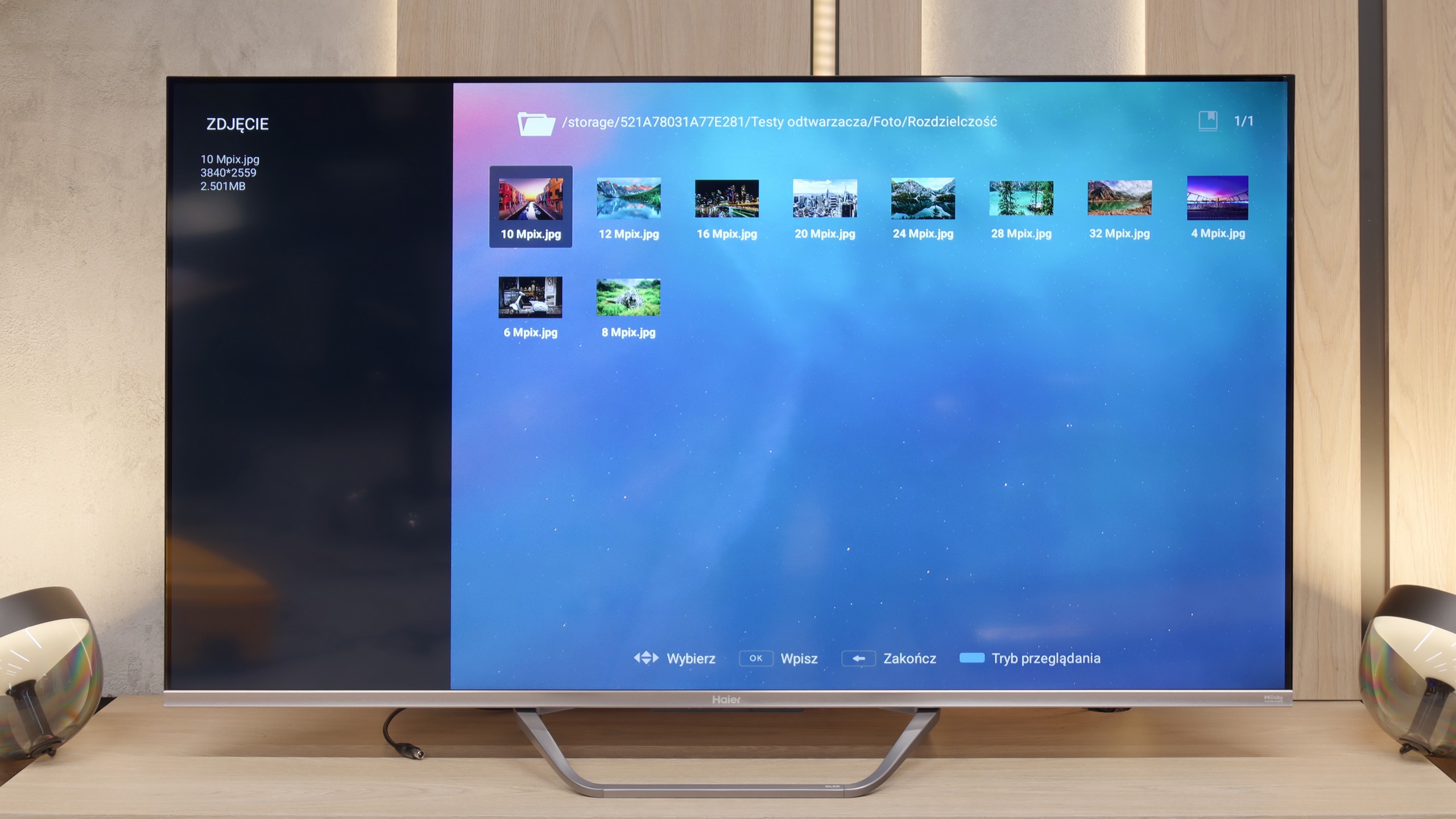
The built-in player in the Samsung QN85D should satisfy most users. It handles popular video and audio formats without major issues, providing solid support for the most commonly used codecs. However, more demanding users may notice some shortcomings – it is not possible to play photos in the HEIC format, which is popular on Apple devices, as well as several other, less common photo formats.
We must admit that after a series of setbacks we experienced in assessing the overall implementation of the Google TV system, we approached the media player test with considerable reservation. Meanwhile, in this one specific aspect, the Q80FUX served us a genuine surprise. The built-in application for managing files from USB drives works simply excellently. This software component seems to be completely immune to the ailments that afflict the rest of the system, opening practically all the most important and popular video file formats that we presented to it.
Apps
8.7/10
9.6/10














































Sound
7/10
5.5/10
- Maximum volume-84dB
- Dolby Digital Plus 7.1
- Dolby True HD 7.1
- Dolby Atmos in Dolby Digital Plus (JOC)
- Dolby Atmos in Dolby True HD
- DTS:X in DTS-HD MA
- DTS-HD Master Audio
The sound on the Samsung QN85D television is pleasant, with a subtle sense of bass and clarity throughout the volume range. This is thanks to the built-in 2.2 40W speakers. Unfortunately, the lack of support for the DTS audio format may be problematic for users wanting to enjoy a full audio experience. In such cases, it will be necessary to use an external player to gain support for this format.
When it comes to acoustic "experiences", the Haier Q80FUX seems to adhere to the principle that sound is simply meant to be there. And it is – that's about all that can be said. The built-in speakers deliver an exceptionally flat sound, lacking character, and above all, they lack any distinct bass foundation. A small consolation is the fact that the television supports Dolby Atmos format. However, let's be honest: to truly benefit from the merits of this codec and hear the promised spatial quality, passive decoding capability is not enough. Connecting an external home theatre system or at least a decent soundbar is, in this case, not just a recommendation but an absolute necessity.
Sound Quality Test
No sound test video
Acoustic Measurements
No acoustic data
84dBC (Max)
75dBC
